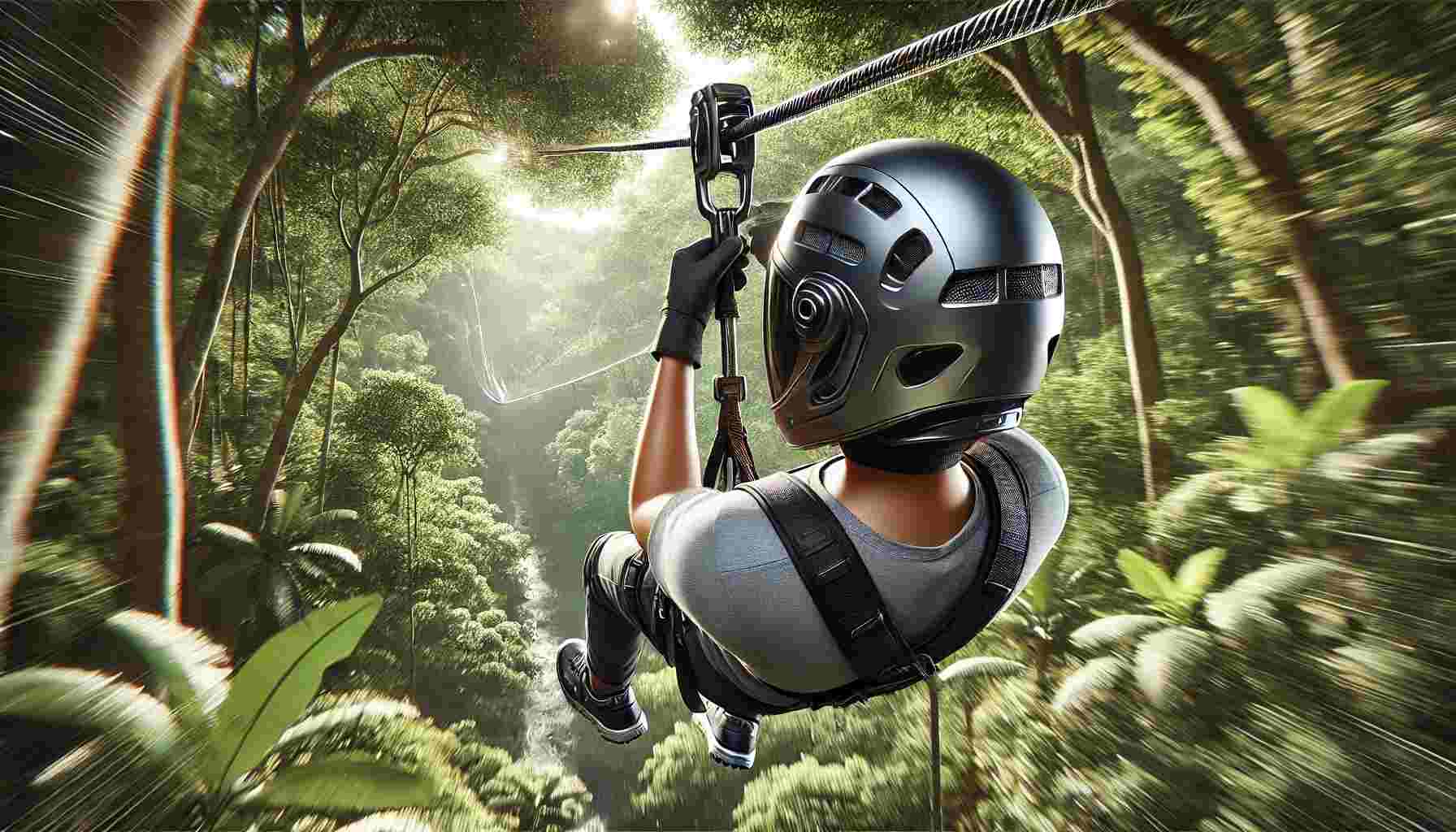This comprehensive guide covers everything you need to know about zip line helmets, including their importance, types, features to look for, and maintenance tips. We’ll also provide insights into some of the best helmets available, backed by studies, statistics, and expert recommendations.
Why is a Helmet Important for Ziplining?
Safety First
A helmet is crucial for protecting your head from potential impacts during a zipline ride. Whether it’s from a fall, collision with tree branches, or accidental bumps, a helmet minimizes the risk of serious head injuries. According to a study by the National Institute for Occupational Safety and Health (NIOSH), helmets reduce the risk of severe head injury by 69% in various outdoor activities .
Comfort and Confidence
Wearing a helmet not only protects but also boosts confidence. Knowing you are well-protected allows you to enjoy the experience more fully without worrying about safety.
Types of Zipline Helmets
Hardshell Helmets
Hardshell helmets are known for their durability and strong outer shell made from materials like ABS plastic. They are ideal for environments where there is a higher risk of impact from hard objects.
In-Mold Helmets
In-mold helmets feature a thin plastic shell directly molded to the foam liner, making them lighter and more comfortable while still offering significant protection. These helmets are suitable for less rugged environments.
Hybrid Helmets
Hybrid helmets combine elements of both hardshell and in-mold designs. They offer a balance of durability, weight, and comfort, making them versatile for various ziplining conditions.
Key Features to Look for in a Zipline Helmet
Proper Fit
A well-fitting helmet is essential. Look for adjustable straps and sizing systems to ensure the helmet fits snugly and securely on your head.
Ventilation
Ventilation is crucial for comfort, especially during long ziplining sessions in warm weather. Helmets with multiple vents allow for better airflow, keeping your head cool.
Weight
Lighter helmets are generally more comfortable, especially during extended use. However, ensure that the helmet does not compromise on safety for the sake of weight.
Certification
Ensure the helmet meets relevant safety standards such as EN 12492 (European Standard for Mountaineering Helmets) or ASTM F1492 (American Standard for Recreational Helmets).
Additional Features
Look for helmets with added features such as built-in visors for sun protection, compatibility with cameras or headlamps, and removable liners for easy cleaning.
Top Zip line Helmets
1. Black Diamond Half Dome
The Black Diamond Half Dome helmet is a popular choice among ziplining enthusiasts. It features a durable hardshell construction, an adjustable suspension system for a perfect fit, and ample ventilation. It’s also relatively lightweight, making it comfortable for extended wear.
Amazon Link: Buy the Black Diamond Half Dome
2. Petzl Meteor
The Petzl Meteor is an in-mold helmet that offers excellent ventilation and comfort. It’s incredibly lightweight and features an adjustable fit system. The helmet meets both EN 12492 and CE standards, ensuring top-notch protection.
Amazon Link: Buy the Petzl Meteor
3. Camp USA Armour
The Camp USA Armour helmet is a versatile hybrid helmet that offers a great balance of durability and comfort. It features a robust outer shell, a comfortable foam liner, and an easy-to-use adjustment system. This helmet is perfect for those who want reliable protection without compromising on comfort.
Amazon Link: Buy the Camp USA Armour
Maintenance Tips for Zip line Helmets
Regular Inspection
Regularly inspect your helmet for any signs of damage, such as cracks, dents, or compromised straps. Replace the helmet if any damage is found to ensure continued safety.
Cleaning
Clean your helmet with mild soap and water, avoiding harsh chemicals that could degrade the materials. Remove and wash the liners if they are removable.
Storage
Store your helmet in a cool, dry place away from direct sunlight and extreme temperatures. Avoid placing heavy objects on top of it to prevent deformation.
Replacement
Helmets should be replaced every five years, even if they appear undamaged. Regular use and exposure to environmental factors can degrade the materials over time.
Studies and Statistics
Helmet Effectiveness
A study published in the Journal of Trauma and Acute Care Surgery found that helmets significantly reduce the severity of head injuries in high-risk activities, including ziplining . The study showed a 70% reduction in traumatic brain injuries when helmets were used consistently.
User Satisfaction
According to a survey conducted by Outdoor Adventure Safety (OAS), 95% of zipline participants reported feeling more confident and secure when wearing a helmet.
Common Questions About Zipline Helmets
Do I Need a Special Helmet for Ziplining?
While you can use helmets designed for other activities like climbing or cycling, it’s best to use a helmet specifically designed for ziplining. These helmets are engineered to provide the best protection for the specific risks associated with ziplining.
How Do I Know If My Helmet Fits Correctly?
A properly fitting helmet should sit level on your head, with the front edge about an inch above your eyebrows. It should feel snug but not tight, and the straps should form a V shape under your ears.
Can I Use a Bike Helmet for Ziplining?
While a bike helmet can offer some protection, it’s not designed for the specific impact scenarios encountered in ziplining. It’s better to use a helmet certified for climbing or ziplining.
How Often Should I Replace My Helmet?
Helmets should be replaced every five years or immediately if they suffer a significant impact. Regular inspection and proper maintenance can help extend the life of your helmet, but eventually, materials will degrade and require replacement.
Conclusion
Choosing the right zip line helmet is crucial for ensuring your safety and enhancing your overall ziplining experience. By understanding the different types of helmets, key features to look for, and proper maintenance practices, you can make an informed decision that prioritizes your safety without sacrificing comfort.
Remember, a quality helmet is an investment in your well-being, allowing you to enjoy the thrill of ziplining with peace of mind.
Stay safe and enjoy your ziplining adventure!








